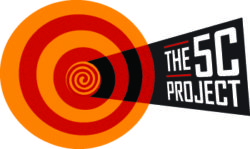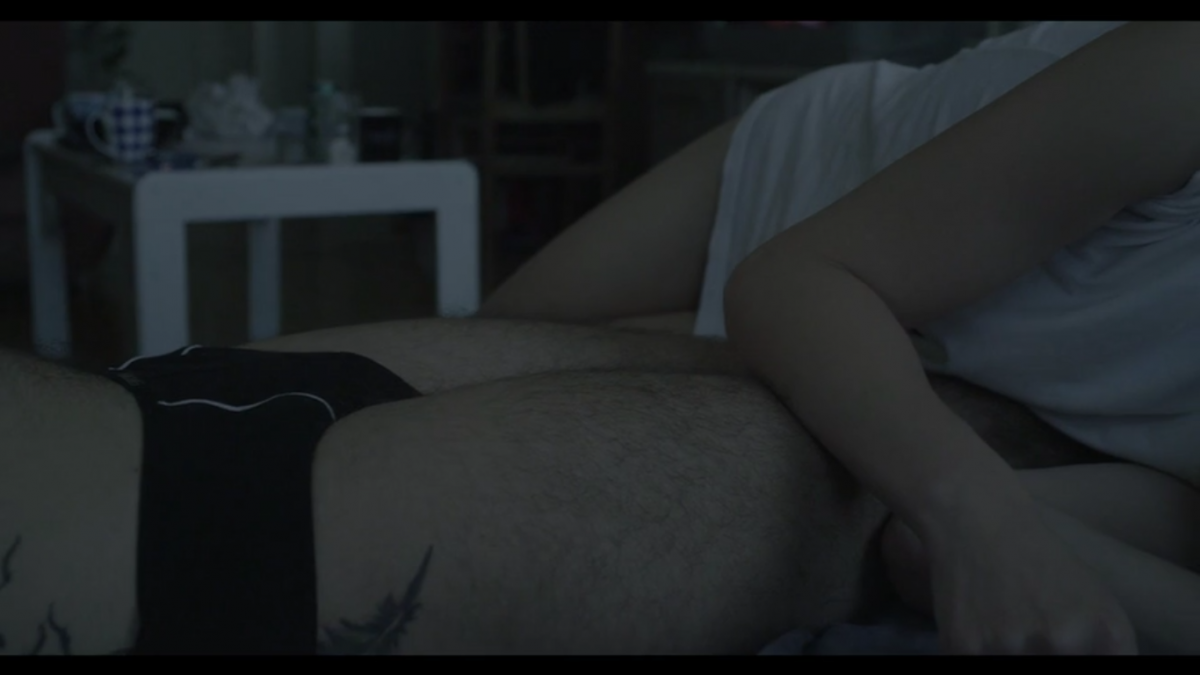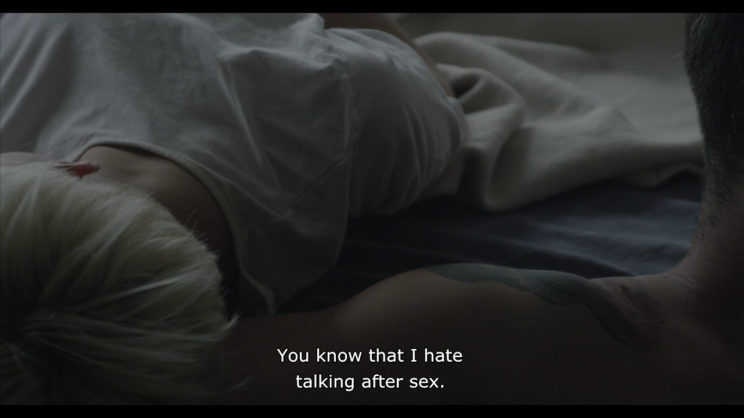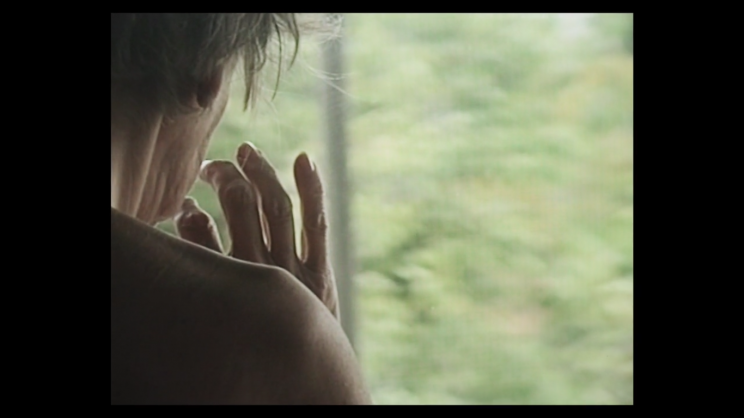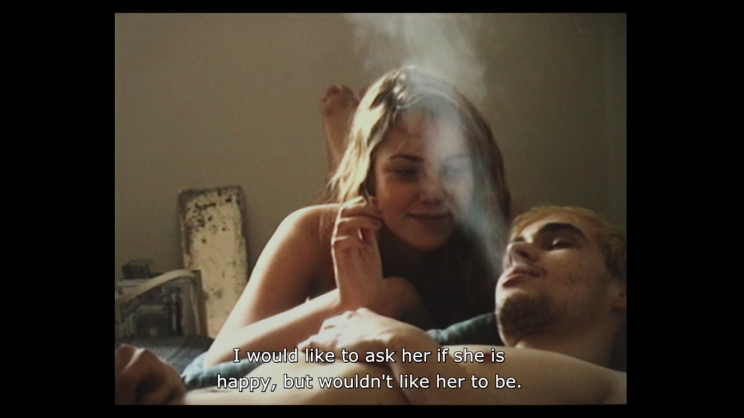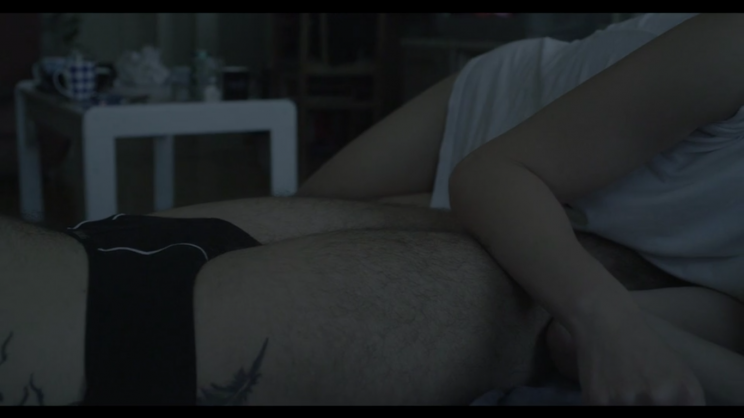During Divan Film & Food Festival, the Cine Caravan attended a workshop “In/Outside the Editing Room”, held by Aleksandra Milovanovic, a teacher at the Faculty of Dramatic Arts in Belgrade. The 5 critics were supposed to apply the knowledge obtained at the workshop by writing an analysis of a film seen in Cetate. Although the festival guests had a chance to see several feature-length movies, I believe it is equally important to pay attention to the Balkan shorts screened at the festival, all made by young filmmakers. That’s why, on this occasion, I choose to write about “Our Skin Is Going to Gray” (2014) by Ivan Bakrac.
The basic thing we need to know about editing is that it is the main cinematic weapon for shaping the continuity of any film and, therefore, it directs our attention and perception. During the process of editing, the sound and the image sync, the images are joined in a fluent visual language and we are introduced to the time-space relationships in the given film. As Aleksandra said, the craftiest type of editing is the one you cannot notice, as it provides you with the impression of a “real world” and natural story flow on the screen. What happens when you break those rules? Is it still possible to direct the audience’s attention? Does it seem artificial?
“Our Skin Is Going to Gray”, both directed and edited by Bakrac, breaks many classical editing rules, slowly approaching the borderline of an experimental form but still relying on a certain narrative. The film introduces us to intertwined stories of three couples of different age. All of the stories take place in flats, allowing us to take a peek into their most intimate moments. Our irruption into their intimacy, subtle sexuality, emotions and creative thoughts happens gradually, thanks to cleverly crafted cinematography and – of course – editing.
The subject of the film conditioned the cinematography style – as the result, we have frames resembling home videos, shot by a hand-held camera, like real bits of someone’s privacy. Switching frame formats contributes to such an impression. Editing comes as an upgrade of this idea. It’s not the continuity of the motion that always defines the cut. Not even the types of shots. It’s the story, it’s atmosphere and the dictate of voyeuristic approach (with the audience being in the enhanced and intensifying voyeuristic position). What we see are extreme close-ups of the protagonists’ skin, their bare feet, their gray hair – everything cut into separate images. The frames do not connect into traditionally logical sequences but more by following the logics of impressions, emotions and atmosphere. The “home video” style is additionally empowered by those unusual cuts, where it seems like somebody made a video over another video on some old, forgotten tape. And it works. How?
Video and sound editing go hand in hand in order to create the fluency and clarity of time-space parameters. Traditionally speaking, it requires them to be perfectly synced. Synced sound and image is not something you will see in this short. On the other hand, sound works as the element of joining the visual materials. Dialogue of one couple overlaps with the imagery of another couple, one couple’s music overlaps with the imagery of the third couple. Many theoreticians agreed that the rhythm is the main unifier of all the other cinematic elements – this film confirms it in a totally unconventional way. Here we can talk about the rhythm on various levels – from the rhythm created in the clash of images and the sound that doesn’t naturally belong to them to the rhythm of the reoccurring song, from the rhythm of the depicted activities to the poetic rhythm of life and different ages derived from interweaving the stories – and all of those would take us back to thoughtfully designed editing.
Finally, we can probably agree that breaking the rules of editing, or any other aspect of filmmaking, doesn’t necessarily have to bring the confusion. On the contrary, that’s how film grows and develops. On the other hand, a filmmaker must harmonize numerous elements in order to have a reason for doing that – a reason emerging from the story, idea, atmosphere, desired effect – anything. Emerging from the poetic moments of a regular everyday life, built through a poignant comparison between different life stages, immersed into the intimate relationships, this film had all the reasons to play with the traditional editing expectations in order to create a different insight into these topics.
